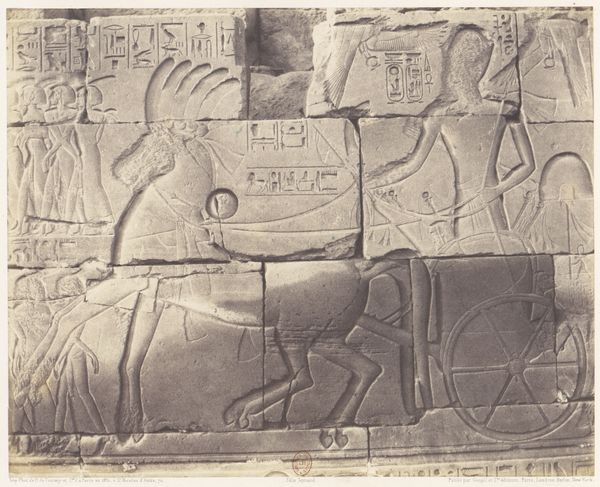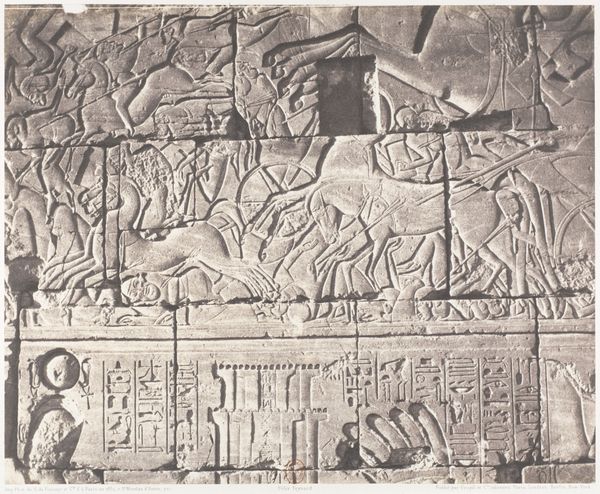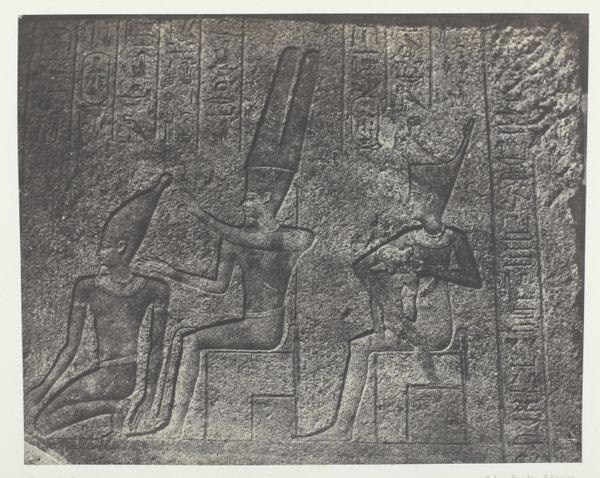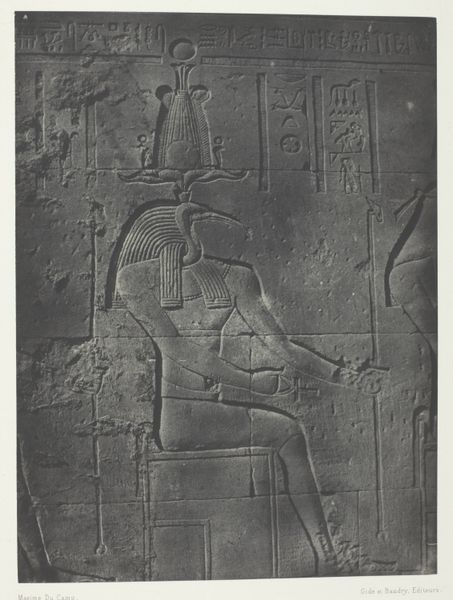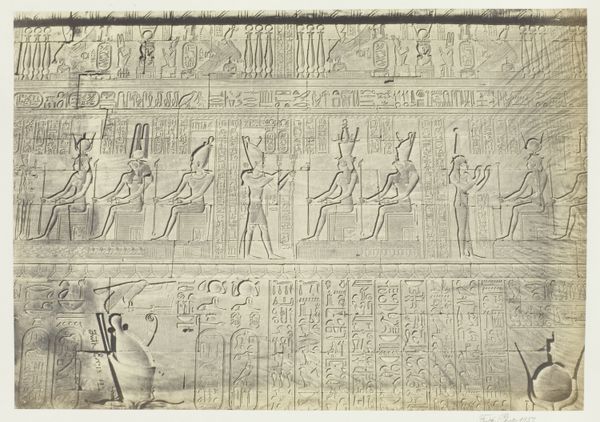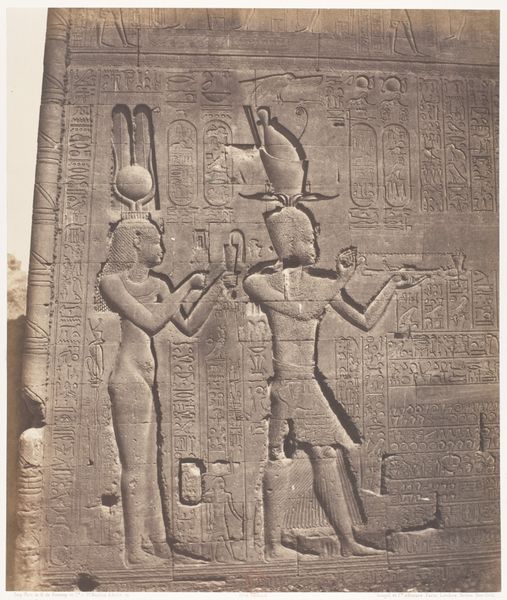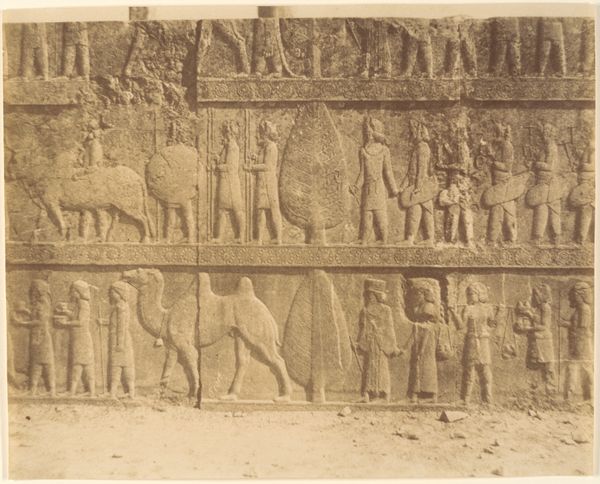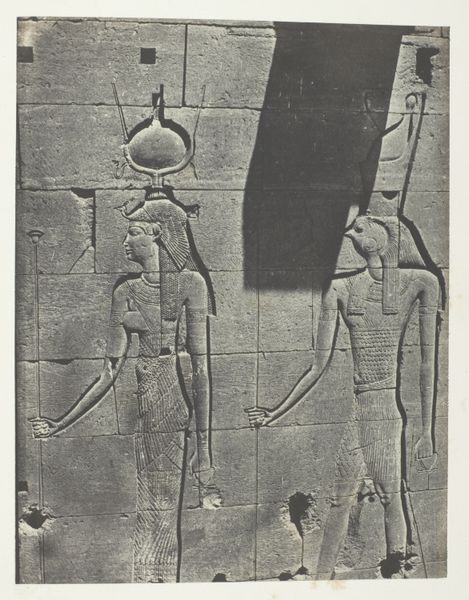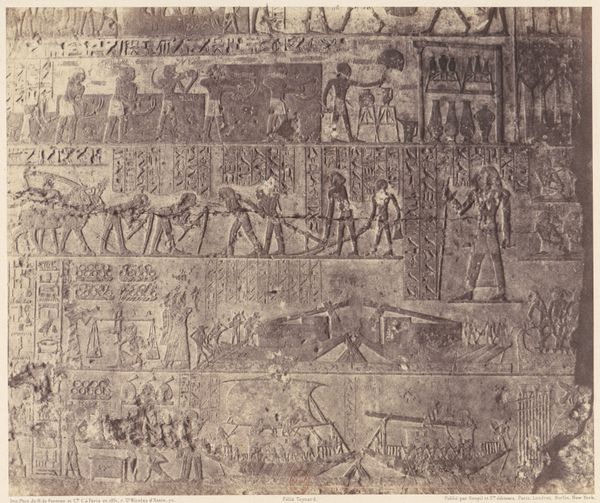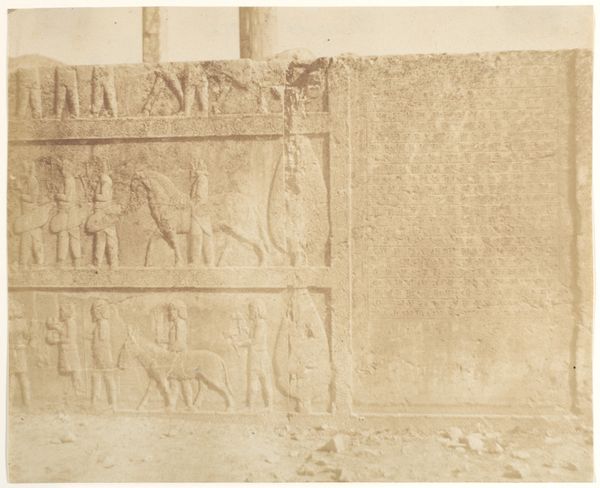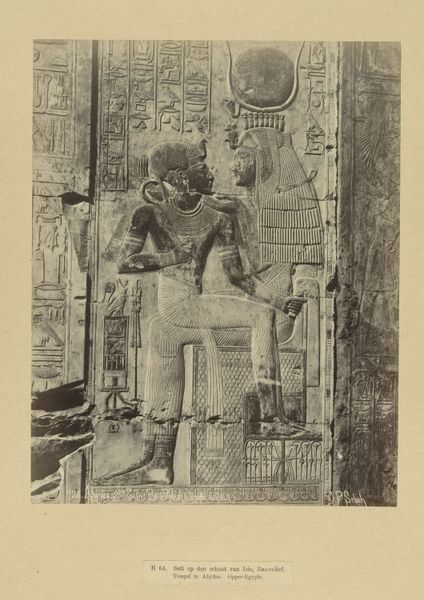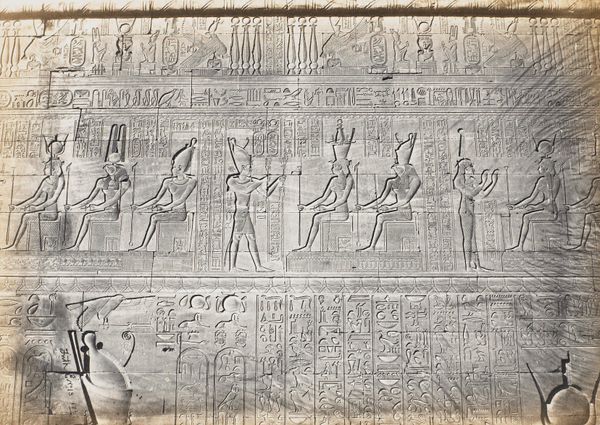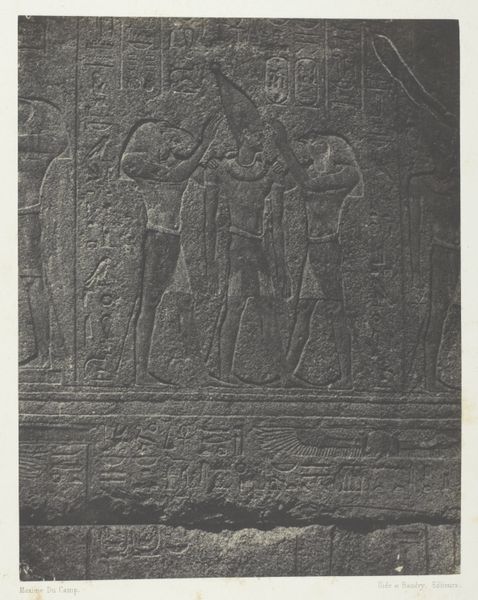
Karnak (Thèbes), Édifice en Ruines - Sculptures du la Paroi Intèrieure, en U 1851 - 1852
0:00
0:00
relief, photography
#
portrait
#
relief
#
ancient-egyptian-art
#
figuration
#
photography
#
ancient-mediterranean
#
history-painting
Dimensions: 24.9 x 30.3 cm. (9 13/16 x 11 15/16 in.)
Copyright: Public Domain
Curator: This striking photograph, taken by Félix Teynard between 1851 and 1852, depicts a relief at Karnak in Thebes, capturing a moment frozen in time and stone. Editor: My first impression? This photo exudes power. Not just the power of kings and gods, but also the quiet strength of something ancient enduring through the ages. It almost feels… sacred. Curator: Indeed. Teynard's work is particularly valuable because it offers us a glimpse into the mid-19th century perception and documentation of Egyptian antiquities. We see the remnants of a society with profound beliefs about divinity and the afterlife, beliefs meticulously recorded in hieroglyphs and monumental architecture. Editor: Looking at the scene, I wonder what kind of ceremony is depicted. The figure presenting something to the seated ruler—maybe an offering? There's something intensely formal about their gestures, but also vulnerable because it's made by humans. Curator: Most likely, yes. What we see are stylized depictions of offering rituals which played a crucial role in maintaining cosmic order. These ceremonies were believed to sustain the gods and ensure the well-being of both the ruler and the kingdom. The level of preservation here allowed people in the west to examine it in more detail. Editor: I notice the texture of the stone, the way the light catches the carvings. Photography immortalizing ancient carvings. Is this, maybe, how ancient societies expressed themselves? The contrast between the medium of photography and its archaic subject seems almost comical. Curator: Teynard's choice of medium invites just such reflections on the relationship between time, preservation, and representation. These images played a crucial role in shaping European understanding of Egypt during a period of intense colonial interest. Editor: It also serves as a kind of cultural transaction; like one grand and old empire, captured by one on the rise. I see this scene. How will our works one day look through such a lens? That’s haunting. Curator: Haunting and perhaps also humbling, yes. These images provide an extraordinary lens through which to view history, revealing both the enduring legacy of ancient civilizations and the ever-evolving nature of cultural interpretation. Editor: Well said. Now if only I knew enough about art to actually speak this well on it all the time!
Comments
No comments
Be the first to comment and join the conversation on the ultimate creative platform.
